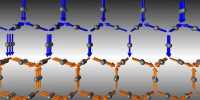It’s past time for us to alter our timekeeping methods. Or so scientists argue in a draft resolution for the forthcoming 27th General Conference on Weights and Measures later this year. We may be able to define the most fundamental unit of time, the second, in new ways thanks to ultra-precise atomic clocks. In 1967, the second was defined as “the duration of 9,192,631,770 cycles of radiation corresponding to the transition between the two hyperfine levels of the cesium 133 atom’s ground state.” In 2018, it was refined, although it was still reliant on the cesium-133 atom’s hyperfine transition.
For many decades, this definition has served mankind well, but advances in optical atomic clocks have gone beyond the precision achievable with more traditional atomic clocks. Cesium is becoming a grandfather clock in this brave new realm of ultra-precise timekeeping. “As a general rule, SI unit definitions should be based on measurement methods that result in the least amount of uncertainty for all secondary measurements of quantities based on those units,” says the author “IFLScience spoke with Dr Liz Donley, chief of the National Institute of Standards and Technology’s Time and Frequency Division.
“Optical frequency standards have advanced to the point where they can do frequency measurements that are 100 times more precise than those made with Cesium as the standard.” However, because the definition of the second has an influence on five of the other six International System of Units (SI), these uncertainties have an impact on mass measurements, distances, and so on. A more precise second affects practically all of the measurements we make.
The 27th CGPM is a conference of the International Bureau of Weights and Measures, which is responsible for regulating and standardizing the SI unit system. Scientists and officials from international standards organizations will assemble to make choices about SI, including redefining base units, as was done in 2018. The second, according to the proposed resolution for the November conference, should be redefined by 2030, either by a new highly accurate atomic transition or by the weighted average of a set of highly accurate atomic transitions. To begin, a set of criteria for this new definition will need to be agreed upon.
For optical clocks to become the standard and the cesium to serve as a secondary representation of the second, a comprehensive number of requirements must be accomplished. According to the New York Times, work is ongoing to better define those standards, which might be released as early as June this year. Even though the standards are clear, institutes all around the world will have to go above and beyond to establish a solid new definition of the second.
“The metrology institutions trying to satisfy the requirements must yet accomplish several crucial milestones, after which we must decide on which atom (or atoms) the new definition will be based on.” “While progress is being made, there is still no consensus on this critical subject,” Dr. Donley told IFLScience. Precision measurements are not just required in laboratories. They have an impact on the technology we use every day, as well as new technologies that optical atomic clocks might bring, such as the ability to precisely quantify gravity changes and more.















